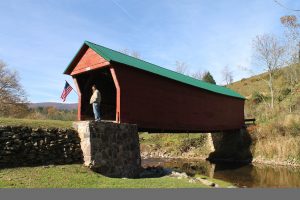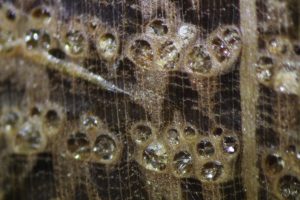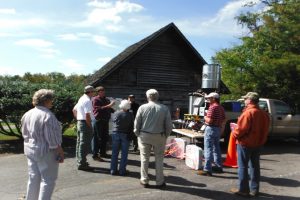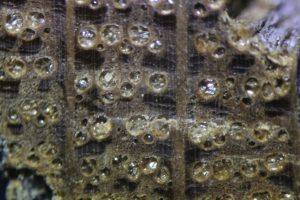We follow recommendations by Hoadley (1990) when removing samples from structures, which are accepted practices by the wood identification community. The samples are fairly small with minimal damage to the structures being examined. In any case, the samples here presented come from a specific section or part of the structure meaning that some sections, parts, or pieces of the structure contains the identified species. It does not imply that the whole structure is made solely of the identified species.
Sinking Creek covered bridge in Newport, VA

The bridge was built in 1916 and it spans 70 feet. Modified Howe trusses were used to build it. This is one of tree covered bridges in Giles county, VA. For more information follow this link.

This white oak sample was taken from the first right footer located at the west entrance of the bridge. Magnification is 20x.
Log granary at Homestead in Critz, VA

The Homestead complex was built around 1843 and includes a two-story brick home, a brick kitchen, a brick milk house, a log icehouse, and the log granary. The sample for identification was taken from one of the logs in the left side of the front wall. For more information on the Homestead follow this link.

This sample of white oak from the log granary at the Homestead features some very dense wood structure which is characteristic from a very old tree. As you can see the proximity of the early wood rings is very close. The structures in the vessels is called tylosis which is heavily presented in white oak. Magnification is 10x.
References
Hoadley, B. 1990. Identifying Wood: Accurate Results with Simple Tools. The Taunton Press. Newtown, Connecticut.
